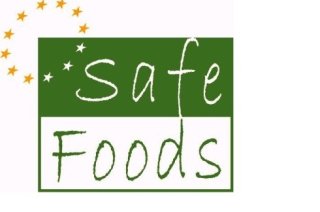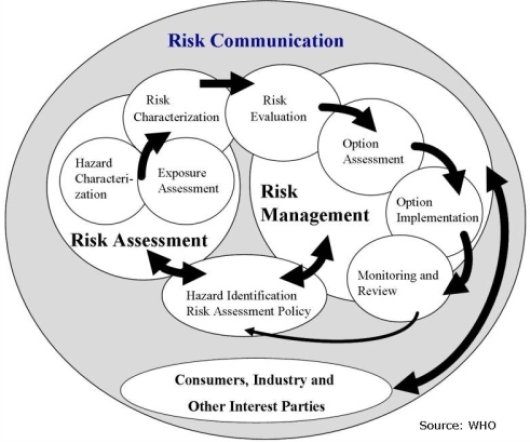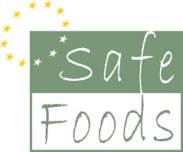
Introduction to SAFE FOODS
The EU project SAFE FOODS aims to contribute to the restoration of consumer trust in the food chain through the development of a new integrated risk analysis approach for foods.
Combining the skills of more than 100 natural and social scientists, coming from 37 institutions in 21 countries, SAFE FOODS is integrating a broad range of disciplines to improve risk analysis practice for food safety.
Risk Analysis aims to ensure that the available food for consumers is safe. It also provides consumers with information so they can make informed choices when purchasing food.
Three main components can be distinguished in the Risk Analysis process: Risk Assessment (scientific advice and information analysis), Risk Management (regulation and control), and Risk Communication.
Definition of Risk Analysis : Risk Analysis is a detailed examination including risk assessment, risk evaluation, and risk management alternatives, performed to understand the nature of unwanted, negative consequences to human life, health, property, or the environment. It is an analytical process to provide information regarding undesirable events; a process of quantification of the probabilities and expected consequences for identified risks.
Actors and tasks of Risk Analysis components
Traditional models of Risk Analysis have assumed that risk communication follows from risk management, which, in turn, is the outcome of risk assessment (figure below).

To read more information about the actors and tasks of Risk Analysis click here.
Experience has shown that further optimisation of this Risk Analysis framework is possible and desirable. This is why SAFE FOODS aims to promote food safety through a new integrated risk analysis approach for foods. With this new Risk Analysis Framework SAFE FOODS aims to restore consumer confidence in the safety of the European food supply.
The overall objective of this new Risk Analysis framework is to change the scope of decision-making on food safety from single risks to considering foods as sources of risks, benefits and costs that are associated with their production and consumption.
Why do we need a new risk analysis approach?
The governance of food safety has long been regarded as the domain of “experts” and professional risk managers, with minimal input from other interested parties, such as consumers. However, a number of food safety incidents in Europe in the latter years of the twentieth century (GMOs, BSE, dioxins, …) have severely damaged public trust in food safety regulation and management and exposed the need for improvements in the current approach to food risk analysis.
Therefore, further improvements in the Risk Analysis framework are needed to solve the problem of a lack of consumer confidence in the safety of food, and to restore trust.
